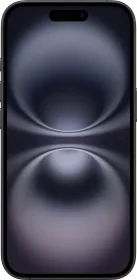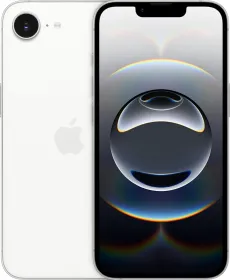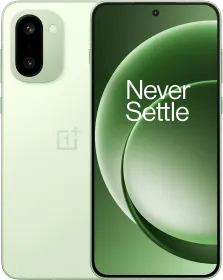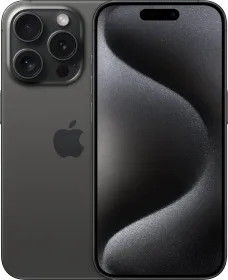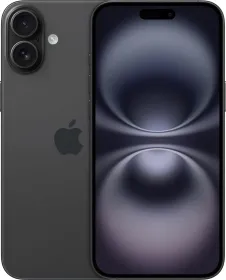The Alphabet-owned tech giant Google recently released its new flagship: the Pixel 10. With a brighter screen, better processor, and a triple camera setup on a non-Pro Pixel for the first time, the Pixel 10 is a compelling upgrade over its predecessor. But how does it compare to other smartphones in its segment? Let’s find out with this detailed comparison.
Also Read: Pixel 10 Pro Fold vs. Galaxy Z Fold 7: The Flagship Android Foldable Showdown
Pixel 10 vs. Competition: Tech Specs
| Pixel 10 | iPhone 16 | Galaxy S25 | vivo X200 | Oppo Find X8 | Xiaomi 15 | |
| Dimensions | 152.8 x 72 x 8.6 mm | 147.6 x 71.6 x 7.8 mm | 146.9 x 70.5 x 7.2 mm | 160.3 x 74.8 x 8 mm | 157.4 x 74.3 x 7.9 mm | 52.3 x 71.2 x 8.08 mm |
| Weight | 204 grams | 170 grams | 162 grams | 197, 202 grams | 193 grams | 191 grams |
| Colors | Indigo, Frost, Lemongrass, Obsidian | Black, White, Pink, Teal, Ultramarine | Icy Blue, Mint, Navy, Silver Shadow, Pink Gold, Coral Red, Blue Black | Natural Green, Cosmos Black | Space Black, Star Gray | Green, Black, White |
| IP Rating | IP68 (1.5m up to 30 minutes) | IP68 (6m up to 30 minutes) | IP68 (1.5m up to 30 minutes) | IP68/IP69 | IP68/IP69 | IP68 |
| Display | 6.3-inch 120Hz | 6.1-inch 60Hz | 6.2-inch 120Hz | 6.67-inch 120Hz | 6.59-inch 120Hz | 6.36-inch 120Hz |
| Panel Technology | OLED LTPS | OLED LTPS | AMOLED LTPO | AMOLED LTPS | AMOLED LTPS | AMOLED LTPO |
| Peak Brightness | 3,000 nits | 2,000 nits (peak) | 2,600 nits (peak) | 4500 nits (peak) | 4500 nits (peak) | 3200 nits (peak) |
| Pixel Density | 422 ppi | 460 ppi | 416 ppi | 460 ppi | 460 ppi | 460 ppi |
| Processor | Tensor G5 (3nm) | Apple A18 (3nm) | Snapdragon 8 Elite (3nm) | Mediatek Dimensity 9400 (3 nm) | Mediatek Dimensity 9400 (3 nm) | Snapdragon 8 Elite (3nm) |
| Peak Clock Speed | 3.78 GHz | 4.04 GHz | 4.47 GHz | 3.63 GHz | 3.63 GHz | 4.32 GHz |
| GPU | Imagination DXT-48-1536 GPU | Apple GPU | Adreno 830 | Immortalis-G925 | Immortalis-G925 | Adreno 830 |
| RAM Type | 12GB of RAM | 8GB of RAM | 12GB of RAM LPDDR5X | Up to 16GB of LPDDR5X | Up to 16GB of LPDDR5X | 12GB of LPDDR5X |
| Storage Type | 256GB UFS 4.0 | Up to 512GB NVMe | Up to 512GB of UFS 4.0 | Up to 512GB of UFS 4.0 | Up to 512GB of UFS 4.0 | 512GB of UFS 4.0 |
| Operating System | Android 16 | iOS 18 | One UI 7 | FuntouchOS 15 | ColorOS 15.0 | HyperOS 2.0 |
| OS Support | 7 year | ~ 5 years | 7 year | 4 years | 4 years | 4 year |
| Security Support | 7 year | ~ 5 years | 7 year | 4 years | 5 years | 6 year |
| Primary Camera | 48MP (f/1.70, OIS), 1/2″ | 48MP (f/1.6, OIS), 1/1.56″ | 50MP (f/1.8, OIS), 1/1.56″ | 50MP (f/1.6, OIS), 1/1.56″ | 50MP (f/1.8, OIS), 1/1.56″ | 50MP (f/1.6, OIS), 1/1.31″ |
| Secondary Camera | 10.8MP (f/3.1, OIS), 1/3.2″, 5x optical zoom lens | – | 10MP (f/2.4, OIS), 1/3.94″, 3x optical zoom lens | 50MP (f/2.6, OIS), 1/1.95″, periscope telephoto 3x optical zoom | 50MP (f/2.6, OIS), 1/1.95″, periscope telephoto 3x optical zoom | 50MP (f/2.0, OIS), 1/2.76″, 2.6x telephoto zoom lens |
| Tertiary Camera | 13MP (f/2.2, 120°), 1/3.1″ ultrawide sensor, AF | 12MP (f/2.2, 120°) ultrawide sensor with AF | 12MP (f/2.2. 120°), 1/2.55″ | 50MP (f/2.0, 119°), 1/2.76″ ultrawide sensor, AF | 50MP (f/2.0, 120°), 1/2.75″ ultrawide sensor, AF | 50MP (f/2.2, 115°), 1/2.76″, ultrawide sensor |
| Selfie Camera | 10.5MP (f/2.2), 1/3.1″ | 12MP (f/1.9), 1/3.6″ | 12MP (f/2.2), 1/3.2″ | 32MP (f/2.0) | 32MP (f/2.4) | 32MP (f/2.0), 1/3.14″ |
| Battery Capacity | 4,970 mAh | 3,561 mAh | 4,000 mAh | 5,800 mAh Si/C | 5,630 mAh Si/C | 5,240 mAh |
| Charging Speed | 30W wired, 15W Pixelsnap wireless (based on Qi2) | 25W wired, 25W wireless | 25W wired, 15W wireless | 90W wired | 80W wired, 50W wireless | 90W wired, 50W wireless |
| Connectivity Options | Wi-Fi 6E, Bluetooth v6.0, NFC, Google Cast, dual-band GNSS GPS, USB Type-C 3.2 | Wi-Fi 7, Bluetooth v5.3, GPS, NFC, USB Type-C 2.0 | Wi-Fi 7, Bluetooth v5.4, GPS, NFC, USB Type-C 3.2 | Wi-Fi 7, Bluetooth v5.4, dual-band GPS, NFC, IR Blaster, USB Type-C 2.0 | Wi-Fi 7, Bluetooth v5.4, dual-band GPS, NFC, IR Blaster, USB Type-C 3.0 | Wi-Fi 6, Bluetooth v6.0, dual-band GPS, NFC, USB Type-C 3.2 |
| Starting Price | Rs. 79,999 (for the 256GB variant) | Rs. 79,999 (for the 128GB variant) | Rs. 74,999 (for the 128GB variant) | Rs. 65,999 (for the 256GB variant) | Rs. 69,999 (for the 256GB variant) | Rs. 64,999 (for the 512GB variant) |
Also Read: Oppo K13 Turbo Pro vs. Poco F7: Which Snapdragon 8s Gen 4 Handset Should You Get?
Pixel 10 vs. Competition: Key Takeaways
Before we move on to other aspects, it’s important to get some things straight. First, the iPhone 16 is the smallest phone (wth a 6.1-inch screen), while the Galaxy S25 and the Pixel 10 have 6.2-inch and 6.3-inch screens, respectively.
The Xiaomi 15 has a 6.36-inch screen; you could still call it a compact flagship, but it is noticeably bigger than its predecessors. Last but not least, the Find X8 and the vivo X200 have 6.59-inch and 6.67-inch displays, respectively.
Design


- Among the compact phones, the Galaxy S25 is the thinnest (at 7.2 mm) and the lightest (162 grams), while the Pixel 10 measures and weighs more than the iPhone 16 (8.6 mm vs. 7.8 mm, 204 grams vs. 170 grams). Between the other three phones, the Find X8 is the slimmest on paper (7.9 mm), while the Xiaomi 15 is the lightest (at 191 grams).
- While the Pixel 10 is available in four colors (including two new shades launched with the handset), the iPhone 16 is available in five shades. The Galaxy S25, on the other hand, is available in seven different options.



- Regarding water resistance, the Pixel 10 features an official IP68 rating, which is pretty much the standard for flagship phones in 2025 (although Chinese phones like the X200 and Find X8 come with an IP69 rating).
- As far as the design is concerned, the Pixel 10 builds on the distinctive looks of the Pixel 9. It features the iconic camera visor on the back, with a shiny glass back (made of Gorilla Glass Victus 2), an aluminum frame, and a punch-hole screen on the front. However, it’s worth mentioning that the Pixel 10 has slightly thicker bezels than the other phones available at the same time.
Display



- The Galaxy S25 and the Xiaomi 15 are the only two phones in the segment that feature an LTPO AMOLED panel (that supports a variable refresh rate between 1-120Hz). All the other phones support a 120Hz refresh rate, but they feature an LTPS panel, implying that the refresh rate can’t go below 60Hz.
- Regarding peak brightness, the vivo X200 and the Find X8 can achieve a local peak brightness of 4,500 nits, followed by the Xiaomi 15 with 3,200 nits. The Pixe 10 can achieve a peak brightness of 3,000 nits, which is still higher than the iPhone 16 and the Galaxy S25.
- Despite having bigger screens, the X200, X8, and Xiaomi 15 have a higher pixel density of 460 ppi, implying that their displays should appear sharper when viewed from a shorter distance. The Picel 10 follows behind (422 ppi), while the S25 comes in last (416 ppi).
Also Read: OnePlus Nord 5 vs. Nothing Phone 3a Pro Camera Comparison: Which One Takes Better Photos?
Performance

- In this comparison, we broadly have four different processors: the Snapdragon 8 Elite, the Dimensity 9400, Apple’s A18, and the Google Tensor G5. What’s common between all the chipsets is that they are based on the Taiwanese semiconductor manufacturer TSMC’s 3nm fabrication technology, which not only unlocks higher performance but also higher power efficiency.
- In terms of raw performance, it is the Snapdragon, Dimensity, and the Apple A series processors that come out on top, and not just in this comparison, but in general, they’re among the most powerful smartphone processors available.



- Talking about the Tensor G5, it provides a major performance boost from the Tensor G4 SoC, primarily due to the change in the manufacturing process, usage of a faster prime core, and combination with 12GB of LPDDR5X RAM and 256GB of UFS 4.0 storage. Google also says that the processor’s TPU is over 2.5x faster in running the Gemini Nano model locally.
- Even though Google has chosen a different GPU from this one, the overall performance of the processor is not on par with the ones mentioned above. On the positive side, the gain in the single-core and multi-core performance should benefit multitasking, app opening/closing times, and reduce the time it takes to render a video after editing it.
- It’s worth mentioning that other phones in the segment do offer a higher storage option (up to 512GB).
Operating System

The Google Pixel 10 runs on the cleanest and most efficient version of Android 16 (out of the box). It includes several new features, such as Live Updates, auto-grouping of notifications, Notification Cooldown, Material 3 Expressive thematics, advanced security measures such as phishing protection, scam blocking, and predictive back gesture.
Among the new AI-based features are Magic Cue, on-call Voice Translation, Camera Coach, Edit with Ask Photos, and up to 100x Pro Res Zoom. Besides, the phone also offers Gemini Live with enhanced visual assistance. Last but not least, there’s a new Pixel Journal app as well.


- In comparison, Apple’s iOS 18 (and in September, the iOS 26) provides an entirely different look and feel. I’ve compiled a hands-on review of iOS 26 and a detailed comparison with iOS 18 if you want to check that out.
- The Galaxy S25 currently runs on One UI 7 (based on Android 15). But soon, it will also get a stable upgrade for One UI 8 (based on Android 16). Moreover, Samsung’s custom user interface provides more customization features, along with a comprehensive AI suite.



- Other user interfaces are also based on Android and have their own key features. For instance, Funtouch OS 15 offers a Lightning-speed Engine, while the ColorOS 15 features the Leminous Rendering engine. Xiaomi’s HyperOS 2.0 offers HyperConnect for a unified ecosystem experience.
Google, along with Samsung, leads the industry with a promise of seven years of major operating system updates (along with security updates). However, Pixel phones also get quarterly Pixel Drops that add minor but useful features.
Also Read: OnePlus Nord 5 vs. realme 15 Pro: Camera Comparison
Cameras



- Among all the phones, it is the Xiaomi 15 that has the biggest primary sensor (1/1.31″), which should help the camera capture more light in low-light environments and enhance the natural background blur. All the others have a 1/1.56″ sensor, except the Pixel 10, which has a 1/2″ primary sensor (borrowed from the Pixel 9a).

- The X200 and the X8 have the largest telephoto camera of all the phones, but their optical zoom range is limited to 3x. The Xiaomi 15 has a 1/2.76″ zoom sensor that maxes out at 2.6x, while the Pixel 10 1/3.2″ sensor provides up to 5x optical zoom (still larger than the one included on the Galaxy S25).
- All the phones have an ultrawide sensor that offers autofocus (doubles as the macro camera), except the Galaxy S25 and the Xiaomi 15.
- The front camera on the X200, Find X8, and Xiaomi 15 provides the highest resolution.
Battery

- Comparing the battery capacities, the vivo X200 has the largest capacity, with a 5,800 mAh Si/C capacity, followed by the Oppo Find X8 with a 5,630 mAh Si/C battery. None of the other phones, including the Pixel 10, features a Si/C battery.
- The Pixel 10 still has a larger battery than the iPhone 16 and the Galaxy S25.
- While the vivo X200 and the Xiaomi 15 offer the fastest wired charging speed (90W), the Find X8 and the Xiaomi 15 offer the fastest wireless charging speeds (50W).
- It’s worth mentioning that the Pixel 10 is the first mainstream Android phone to feature wireless magnetic charging, called Pixelsnap charging.
You can follow Smartprix on Twitter, Facebook, Instagram, and Google News. Visit smartprix.com for the latest tech and auto news, reviews, and guides.











